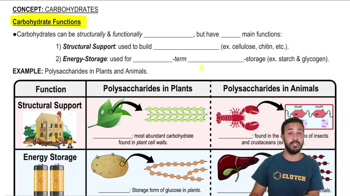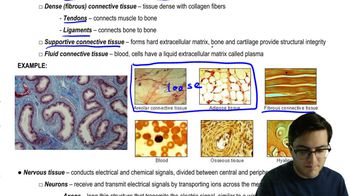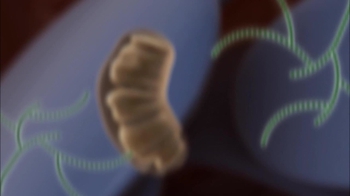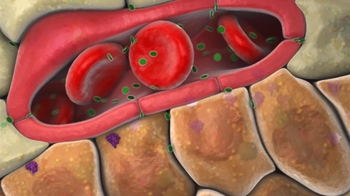Table of contents
- 1. Introduction to Biology2h 42m
- 2. Chemistry3h 40m
- 3. Water1h 26m
- 4. Biomolecules2h 23m
- 5. Cell Components2h 26m
- 6. The Membrane2h 31m
- 7. Energy and Metabolism2h 0m
- 8. Respiration2h 40m
- 9. Photosynthesis2h 49m
- 10. Cell Signaling59m
- 11. Cell Division2h 47m
- 12. Meiosis2h 0m
- 13. Mendelian Genetics4h 44m
- Introduction to Mendel's Experiments7m
- Genotype vs. Phenotype17m
- Punnett Squares13m
- Mendel's Experiments26m
- Mendel's Laws18m
- Monohybrid Crosses19m
- Test Crosses14m
- Dihybrid Crosses20m
- Punnett Square Probability26m
- Incomplete Dominance vs. Codominance20m
- Epistasis7m
- Non-Mendelian Genetics12m
- Pedigrees6m
- Autosomal Inheritance21m
- Sex-Linked Inheritance43m
- X-Inactivation9m
- 14. DNA Synthesis2h 27m
- 15. Gene Expression3h 20m
- 16. Regulation of Expression3h 31m
- Introduction to Regulation of Gene Expression13m
- Prokaryotic Gene Regulation via Operons27m
- The Lac Operon21m
- Glucose's Impact on Lac Operon25m
- The Trp Operon20m
- Review of the Lac Operon & Trp Operon11m
- Introduction to Eukaryotic Gene Regulation9m
- Eukaryotic Chromatin Modifications16m
- Eukaryotic Transcriptional Control22m
- Eukaryotic Post-Transcriptional Regulation28m
- Eukaryotic Post-Translational Regulation13m
- 17. Viruses37m
- 18. Biotechnology2h 58m
- 19. Genomics17m
- 20. Development1h 5m
- 21. Evolution3h 1m
- 22. Evolution of Populations3h 52m
- 23. Speciation1h 37m
- 24. History of Life on Earth2h 6m
- 25. Phylogeny2h 31m
- 26. Prokaryotes4h 59m
- 27. Protists1h 12m
- 28. Plants1h 22m
- 29. Fungi36m
- 30. Overview of Animals34m
- 31. Invertebrates1h 2m
- 32. Vertebrates50m
- 33. Plant Anatomy1h 3m
- 34. Vascular Plant Transport1h 2m
- 35. Soil37m
- 36. Plant Reproduction47m
- 37. Plant Sensation and Response1h 9m
- 38. Animal Form and Function1h 19m
- 39. Digestive System1h 10m
- 40. Circulatory System1h 57m
- 41. Immune System1h 12m
- 42. Osmoregulation and Excretion50m
- 43. Endocrine System1h 4m
- 44. Animal Reproduction1h 2m
- 45. Nervous System1h 55m
- 46. Sensory Systems46m
- 47. Muscle Systems23m
- 48. Ecology3h 11m
- Introduction to Ecology20m
- Biogeography14m
- Earth's Climate Patterns50m
- Introduction to Terrestrial Biomes10m
- Terrestrial Biomes: Near Equator13m
- Terrestrial Biomes: Temperate Regions10m
- Terrestrial Biomes: Northern Regions15m
- Introduction to Aquatic Biomes27m
- Freshwater Aquatic Biomes14m
- Marine Aquatic Biomes13m
- 49. Animal Behavior28m
- 50. Population Ecology3h 41m
- Introduction to Population Ecology28m
- Population Sampling Methods23m
- Life History12m
- Population Demography17m
- Factors Limiting Population Growth14m
- Introduction to Population Growth Models22m
- Linear Population Growth6m
- Exponential Population Growth29m
- Logistic Population Growth32m
- r/K Selection10m
- The Human Population22m
- 51. Community Ecology2h 46m
- Introduction to Community Ecology2m
- Introduction to Community Interactions9m
- Community Interactions: Competition (-/-)38m
- Community Interactions: Exploitation (+/-)23m
- Community Interactions: Mutualism (+/+) & Commensalism (+/0)9m
- Community Structure35m
- Community Dynamics26m
- Geographic Impact on Communities21m
- 52. Ecosystems2h 36m
- 53. Conservation Biology24m
39. Digestive System
Blood Sugar Homeostasis
Problem 7`
Textbook Question
If you were to jog 1 km a few hours after lunch, which stored fuel would you probably tap?
a. Muscle proteins
b. Muscle and liver glycogen
c. Fat in the liver
d. Fat in adipose tissue
 Verified step by step guidance
Verified step by step guidance1
Understand that the body uses different energy sources depending on the intensity and duration of the exercise, as well as the time since the last meal.
Recognize that glycogen stored in muscles and the liver is a primary source of energy for short-term, moderate-intensity activities like jogging.
Consider that after a meal, the body will have replenished its glycogen stores, making glycogen a readily available energy source.
Note that fat stores, such as those in adipose tissue, are typically used for longer-duration, lower-intensity activities or when glycogen stores are depleted.
Conclude that for a short jog a few hours after eating, the body is most likely to use muscle and liver glycogen as the primary fuel source.
 Verified video answer for a similar problem:
Verified video answer for a similar problem:This video solution was recommended by our tutors as helpful for the problem above
Video duration:
2mPlay a video:
Was this helpful?
Key Concepts
Here are the essential concepts you must grasp in order to answer the question correctly.
Glycogen Storage and Utilization
Glycogen is a stored form of glucose found primarily in the liver and muscles. After a meal, excess glucose is converted into glycogen for storage. During physical activities like jogging, the body first utilizes glycogen reserves for quick energy, especially from muscle glycogen, as it is readily accessible and can be rapidly mobilized to meet energy demands.
Recommended video:
Guided course

Carbohydrate Functions
Energy Metabolism
Energy metabolism refers to the biochemical processes that convert food into energy. The body prioritizes different energy sources based on availability and intensity of activity. For moderate activities like jogging, carbohydrates stored as glycogen are the primary energy source, as they provide a quick and efficient release of energy compared to fats or proteins.
Recommended video:
Guided course

Metabolic Rate
Role of Adipose Tissue in Energy Storage
Adipose tissue stores energy in the form of fat, which is a long-term energy reserve. While fats provide a high energy yield, they are not the body's immediate choice for energy during short, moderate activities. Instead, fats are typically mobilized during prolonged, low-intensity exercise or when glycogen stores are depleted, making them less likely to be used for a short jog after a meal.
Recommended video:
Guided course

Connective and Nervous Tissues

 7:01m
7:01mWatch next
Master Blood Sugar Homeostasis with a bite sized video explanation from Jason
Start learningRelated Videos
Related Practice















